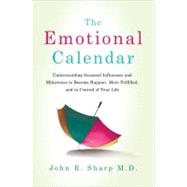
John R. Sharp, M.D., is a psychiatrist and neuropsychiatrist who serves on the medical staff at the Beth Israel Deaconess Medical Center in Boston. He is on the faculty at Harvard Medical School and at the David Geffen School of Medicine at UCLA, and he divides his time between Boston and Los Angeles.
| Author's Note | p. xi |
| Introduction | p. 1 |
| The Emotional Calendar | p. 7 |
| The Four Seasons (You Thought You Knew) | |
| Supercharged Summer | p. 39 |
| The Reality of Winter | p. 51 |
| The Wide Hand of Winter | p. 63 |
| Spring: What Do You Want? | p. 75 |
| The Environmental Factors | |
| Running Cold and Hot | p. 99 |
| Living in Light and Dark | p. 110 |
| Wind and Storm: The Weather of Catastrophe | p. 129 |
| Emotional Hotspots: It's That Time of Year Again | |
| Emotional Memory | p. 153 |
| The Cultural Calendar | p. 164 |
| Your Personal Calendar | p. 182 |
| Awareness | |
| Looking Outward, Looking Inward | p. 201 |
| Seasonal Embrace | p. 243 |
| Notes | p. 249 |
| Acknowledgments | p. 259 |
| Index | p. 263 |
| Table of Contents provided by Ingram. All Rights Reserved. |
The New copy of this book will include any supplemental materials advertised. Please check the title of the book to determine if it should include any access cards, study guides, lab manuals, CDs, etc.
The Used, Rental and eBook copies of this book are not guaranteed to include any supplemental materials. Typically, only the book itself is included. This is true even if the title states it includes any access cards, study guides, lab manuals, CDs, etc.